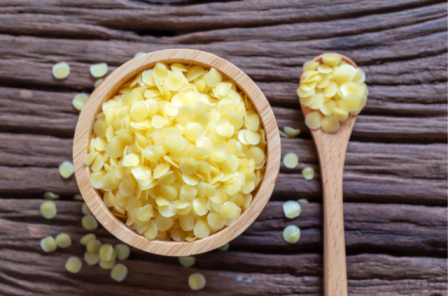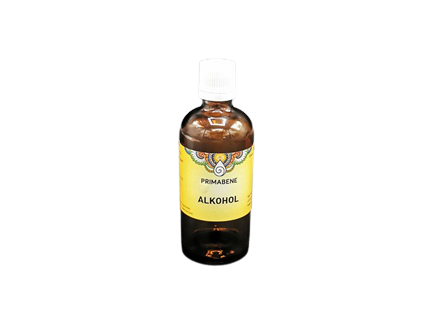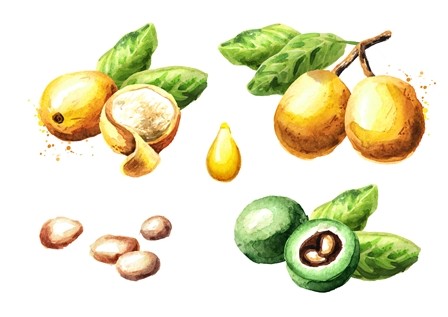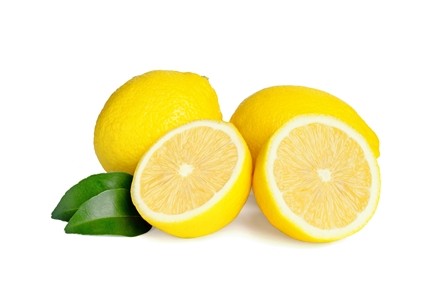product description
Master plant: Vitellaria paradoxa ssp. paradoxa C.F.Gaertn.
Sapotaceae (Sapodilla family)
INCI: Butyrospermum parkii butter
Origin:
Shea butter nilotica, also called Karite-fat or Muyao butter, comes from the West African countries and is extracted from the fruit cores of the Karité-tree.
Characteristics and substances:
The organic shea butter is characterised by a light yellowish appearance, a creamy butter-like consistency and a weak fatty smell.
Sheabutter contains a relatively high percentage of unsaponifiable components (5-9%), as well as a natural sun protection factor ( ~ SPF 3) and is also known for its natural content of allantoin, vitamin A and E. Shea butter is included in cosmetics for it can give nurturing consistency.
Applications:
The unsaponifiable components have eudermic, nurturing and protecting features and consequently a great importance in dermatology and cosmetics. Especially meant for dry, not very oily and frequently very scaly skin with little moisture.
Shea butter is a high-quality, well tolerated, all-round applicable raw ingredient, that is characterised by an excellent lipidic replenishing, hydrophilic and skin-smoothing effect.
Note:
Shea Butter organic is a high-quality organic natural product and is therefore also subject to natural fluctuations in smell and color. Depending on the origin and processing, the consistency, smell and melting point may also vary.
During the filling process, the shea butter is heated. This can result in a ghastly consistency, the so-called polymorphism. These structures are created due to different temperatures during cooling after filling.
This is not a lack of quality.
If the Shea Butter is reheated or melted and then cooled down quickly, the Shea Butter again has the desired consistency (solid, smooth and homogeneous). The melting point is: 28-45 °C.
Reviews










